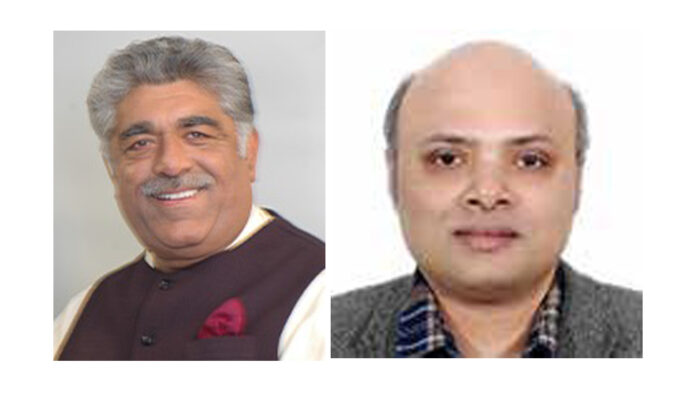Vipin Malik, Chairman & Mentor, Infomerics Ratings.
Sankhanath Bandyopadhyay, Economist, Infomerics Ratings.
The World Economic Forum’s recently published “Global Risks Report 2024”, has highlighted that a multipolar order will dominate in the next ten years, as middle and great powers set and enforce as well as contest current rules and norms. The report considers the implications of this fragmented world, where vigilance for global risks is ever more critical but is thwarted by lack of consensus and cooperation. It also presents a conceptual framework for addressing global risks, identifying the scope for “minimum viable effort” for action, depending on the nature of the risk.
Besides, the number of potential risks, globally Central Banks are cautious on policy rates, given the core inflation in many countries is yet to show a sustained decline. For instance, US inflation rate has increased to 3.4 percent for the 12 months ending December 2023, higher than the 3.1- percent increase in November 2023, indicating that easing of US policy rate might take a bit longer than anticipated. The increase is higher than market expectation of 3.2%, due to the slow pace of calming down the energy prices. For instance, Energy costs dropped 2% (vs -5.4% in November), with gasoline declining 1.9% (vs -8.9%), utility (piped) gas service falling 13.8% (vs -10.4%) and fuel oil sinking 14.7% (vs -24.8%). According to the Bureau of Labour Statistics, US Department of Labour (BLS), Annual core inflation rate eased to 3.9%, below 4% in the previous period but above expectations of 3.8%. The Fed minutes have shown there is only a thought of possible rate cut depending on the inflation situation, but still it is too early to expect a rate cut before June’24.
The Euro-Area economy contracted slightly in Q3 2023, with varied performance across member countries. The European Central Bank’s decision to maintain high-interest rates indicates continued concern over inflation, which saw a moderate increase in December 2023. Further, UK inflation has increased to 4% in Dec’23 backed by a rise in alcohol and tobacco prices. Chinese central bank left the medium-term policy rate unchanged.
In the Indian context, World Bank kept its economic growth projection for India unchanged at 6.4% for FY25 on the back of strong domestic demand, rising public infrastructure spending, and strong private-sector credit growth. The RBI’s expectation of India’s growth is around 7% and inflation at 4.5% in FY25. Real GDP registered a growth of 7.6 per cent in the second quarter of 2023-24, up from 6.2 per cent in second quarter of the 2022-23 (7.8 per cent in Q1:2023-24). Among the components of real GDP, private final consumption expenditure (PFCE) registered a moderate growth of 3.1 per cent in Q2, primarily due to moderate rural demand conditions following lower kharif production.
After the J. P. Morgan index inclusion, Bloomberg proposes a 10% weight for India bonds on its Emerging Market Bond Index. The inclusion of India Fully Accessible Route bonds in the Bloomberg EM Local Currency Indices is to be phased in over five months, starting in September 2024. Both two and three-wheeler sales recorded y-o-y growth of 30 per cent in November 2023. Tractor sales expanded by 6.4 per cent in Nov’23 after contracting for the past two months. Vehicle registrations also recorded strong y-o-y growth in Nov’23.
However, on the flip side, India’s retail inflation accelerated to a four-month high of 5.69% in December 2023, from 5.55% a month earlier, led by an uptick in food prices that rose 9.5% nationally and breached the 10% mark for urban consumers, hitting 10.42%. The core inflation eased to 3.9%. Interestingly, the easing of core inflation shows the lag efficacy of the RBI policy rate hikes. Nevertheless, the upward momentum of the vegetable prices remains a matter of concern. Prices of vegetables (27.64%), pulses & products (20.73%), spices (19.69%) remain higher. Rural inflation (5.93%) remains higher than the urban inflation (5.46%). State-wise, inflation in Odisha (8.73%), Gujarat (7.07%), Rajasthan (6.95%), Haryana (6.72%) remains high.
Despite a slight uptick, the retail inflation data provides a sense of relief as it came in below both market expectations and the government’s upper tolerance band of 6%. Once again, inflation in food and beverages played a significant role in driving overall headline inflation in December. The core inflation, which excludes the more volatile groups of food, fuel, and energy, has been consistently declining for eleven consecutive months, which provides a hope for a rate softening, though it may not be anytime soon.
The RBI Governor has expressed concern especially on food inflation which could be more volatile than expected, going forward. Amid such concerns and increasing global uncertainties, global central banks are overtly cautions on policy rates.












